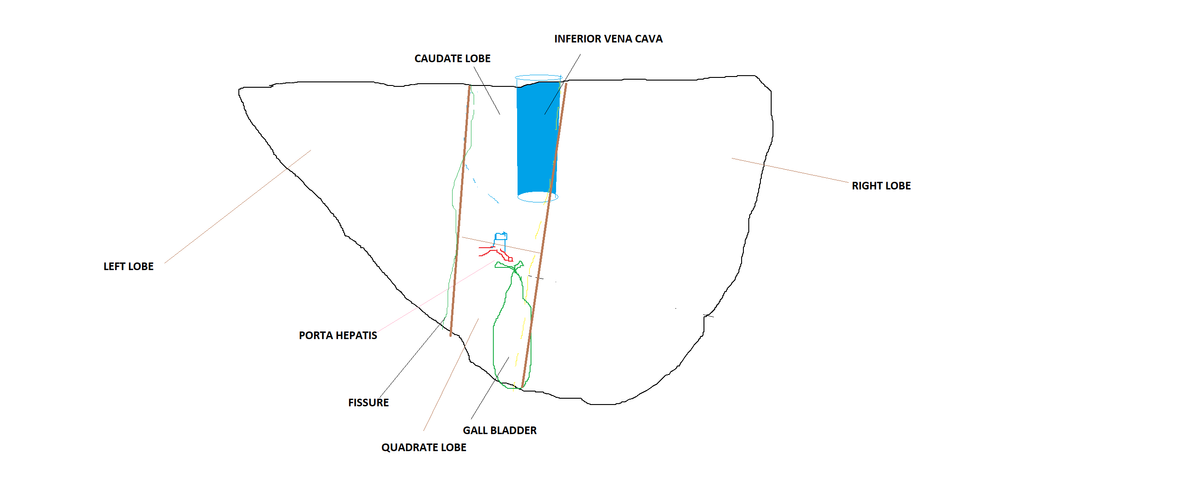(a) Make a rough sketch of the visceral surface of the liver, and label the following five structures: fissure, porta hepatis, inferior vena cava, gallbladder, caudate lobe. (b) To follow up on part (a), it is easy to learn the structure of the visceral surface of the liver if you can find and mark the big H there. To mark the left vertical limb of the H, draw a line through the fissure. To mark the crossbar of the H, draw a horizontal line through the porta hepatis. Then, to mark the right limb of the H, draw a continuous vertical line through the inferior vena cava and gallbladder. Which two lobes are inside the H? Which limb of the H separates the liver’s right and left lobes?
(a) Make a rough sketch of the visceral surface of the liver, and label the following five structures: fissure, porta hepatis, inferior vena cava, gallbladder, caudate lobe. (b) To follow up on part (a), it is easy to learn the structure of the visceral surface of the liver if you can find and mark the big H there. To mark the left vertical limb of the H, draw a line through the fissure. To mark the crossbar of the H, draw a horizontal line through the porta hepatis. Then, to mark the right limb of the H, draw a continuous vertical line through the inferior vena cava and gallbladder. Which two lobes are inside the H? Which limb of the H separates the liver’s right and left lobes?
The liver is an important organ lying below the right crus of the diaphragm.
It consists of the right and left lobes separated by the falciform ligament.
The visceral surface also shows the caudate and the quadrate lobes.
The liver lies in close association with the gall bladder.
The porta hepatis is a transverse fissure in the visceral surface of the liver.
The following is the diagram of the visceral surface of the liver:-

Step by step
Solved in 2 steps with 1 images








